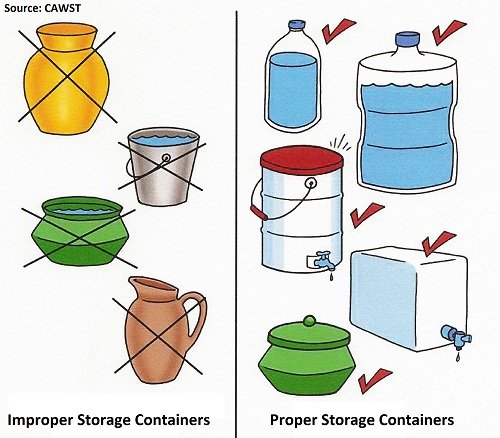Water Storage Containers Come in All Shapes and Sizes, But Safe Storage Containers Should Always Have Certain Characteristics
Water storage containers are found around the world in all shapes and sizes. Most larger communities will have a merchant or dealer who can sell some type of acceptable water container.
Note: The content on this page has been adapted from publications of World Health Organization (WHO) and Centre for Affordable Water and Sanitation Technology (CAWST).

A safe water storage container should have the following qualities:
* Strong and tightly fitting lid or cover. The container may be plastic, metal, or ceramic, but the lid must fit tightly. In addition to this, the container must have a...
* Tap or narrow opening. Narrow openings prevent dipping into the container with a ladle or device that is unsanitary and can contaminate the water inside the container.
* A stable base so it doesn't tip over
* Must be durable and strong
* Should not be transparent (see-through)
* Easy to clean
Other safe water handling practices include:
* Using a container to collect and store untreated water and using it only for untreated water
* Using a different container to store treated water - never use this container for untreated water
* Frequently cleaning out the storage container with soap or chlorine
* Storing treated water off the ground in a shady place in the home
* Storing treated water away from small children and animals
* Pouring treated water from the container instead of scooping the water out of it
* Drinking treated water as soon as possible, preferably the same day
Sometimes it is difficult to find or buy a good storage container.
The most important things are to make sure that it is covered and only used for treated water.

Return to "Water Treatment" from "Water Storage Containers"
Return "Home"









